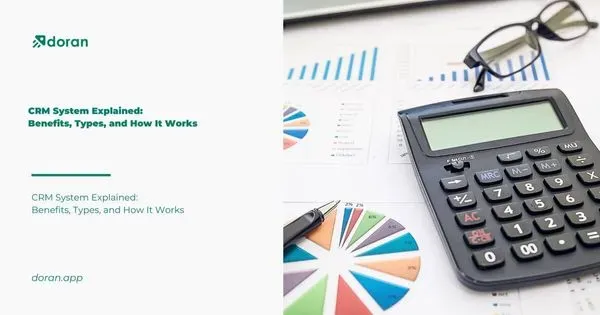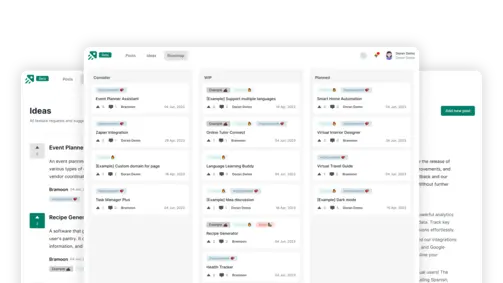Innovate with Intent: Learning how to Write a Roadmap for Growth
Create changelog and product roadmap for your product
Explore nowTable of contents 6 min
Navigating the business landscape demands more than vision; it requires a roadmap. This guide looks into the intricacies of creating a roadmap, breaking down the process into actionable steps. Whether you’re steering a startup or leading an established enterprise, understanding how to write a roadmap is paramount. We explore the strategic considerations, milestone identification, and communication strategies that elevate your roadmap from a mere plan to a dynamic tool driving organizational success.
How to Write a Roadmap
Ensure that You are Using the Appropriate Roadmap Tool

The first advice on writing a roadmap is to ensure you are using the right roadmap tool. Making the wrong application choice for your roadmap leads you to use it through out the entire development of your product; thus, this is a crucial decision. This could result in you having to put in countless hours of additional effort, a poorly presented strategy, and stakeholders receiving information that is often out of date.
A roadmap is actually a living, dynamic document, despite the common misconception that it is a static document that is created once and then mostly forgotten.
The priorities for your product will shift. Your customer base will shift. Finances will shift. The environment in which you compete will shift. The roadmap itself should be easily accessible so that any relevant party development, marketing, sales, and executive stakeholders can view it and get an updated picture of where the product is in its development journey. All of these modifications must be reflected on the roadmap. What good is your roadmap tool if it makes sharing and updating information inside the company difficult?
However, we discovered that most product managers were still utilizing spreadsheets and presentation software to generate roadmaps when we surveyed them a few years ago to learn more about their process and the biggest obstacles they faced. Surprisingly, the primary issue raised by these PMs with their product roadmaps was that they required excessive time to develop and maintain.
Find out more: The Data Journey: A Step-by-Step Business Intelligence Roadmap
Problems with Roadmaps
In case you’re interested, two other significant problems were that the PMs’roadmaps were static documents that frequently left CEOs and other stakeholders with outdated information. They were not visually appealing, which made it harder to use them to get stakeholder buy-in.
Consider the advantages and disadvantages of any application you intend to utilize before drafting a roadmap. For example, spreadsheet and presentation tools generate static files that are difficult to distribute and find centrally, requiring manual updates. This makes sharing more challenging.
The answer? Make use of a roadmap creation programme that was created with that goal in mind. Choose a tool that can generate an aesthetically appealing presentation for product meetings with development teams, stakeholders, and other important groups and that takes into account the need for straightforward drag-and-drop modifications that can be stored online at a single URL for simple distribution.
Make Sure the Roadmap You’re Developing is Eye-catching and Visually Clear

Next up in our advice on how to write a roadmap is to ensure that your roadmap is visually appealing and easy to understand.
Imagine creating a roadmap with endless rows of epics, features, and narratives in a spreadsheet format. Although it is a little boring, surely anyone can appreciate the brilliance of your plan if they can look past the rows of text in an 8-point font?
Perhaps.
A high-quality visual presentation is a potent tool for gaining support for your action plan.
Some product teams spend hours crafting a visually stunning roadmap because they are concerned about making the correct impression. Stories about how important the presentation is are common. For instance:
-
The product roadmap was created by a designer under the supervision of the VP of Product using Adobe Illustrator. (Unfortunately, each modification required the designer’s input).
-
The marketing department was consulted by the product managers to create a roadmap, which was so well-written that the managers kept using it even after the material on it had become antiquated!
-
The product owner devoted hours each month to reorganizing and colour-coding a spreadsheet to clarify how the roadmap related to the strategy.
These teams were so aware of the importance of the visual that they devoted excessive time and money to developing a roadmap designed for effective presentation.
However, with today’s agile environment, you don’t have time to fuss over updating a spreadsheet, PowerPoint deck, or graphic each time the roadmap is revised or your bosses request a review.
The Benefits of Specialized Roadmap Software
For this reason, our initial recommendation was to choose the programme to create your roadmap extremely carefully. You can present your product strategy with visual appeal by using specialized roadmap software.
Here are some tips for making an effective roadmap, regardless of the technology you use to create it: word processing software, spreadsheet software, presentation tools, or apps designed for building roadmaps.
-
Apply color: Using colour to illustrate the relationship between your roadmap and the strategic goals or product vision is an excellent idea. To assist staff in understanding the relationship between each initiative and its overall purpose, colour-code each item on your roadmap.
-
Employ large fonts: Employ huge letters while presenting your roadmap, especially if you’re doing it in an online meeting or on a projector. People will only have a short while to comprehend your plan. You’ll have an advantage when you approach your plan as a presentation.
-
Keep it broad: Remember that you are narrating a story about how your plan aligns with the goals of the product. Thus, instead of focusing on small details, portray the story in broad, dramatic strokes. To help with comprehension, try organizing the initiatives into logical groupings.
Read more: Decoding Success: A Deep Dive into Strategy Roadmap Examples
Ensure that Each Item on the Roadmap Has a Strategic Justification Attached to It

Last but not least, our guide on how to write a roadmap is to justify every detail you put on your roadmap.
Regarding this, it makes sense to figure out how to incorporate the rationale for each theme, epics, and other projects you’ve decided to include into your roadmap. Your team and everyone else you’ve granted permission to see the roadmap should be able to see the reasons for your priority ranking if it is included.
This strategy has various advantages. Firstly, your team will make more strategic product decisions if you establish a rule requiring every item on the roadmap to justify its existence. Secondly, you are more likely to gain support from stakeholders when you clearly explain on the roadmap why each item belongs there.
In the ever-evolving business world, articulating and executing a strategic vision is a defining factor for success. As we conclude our exploration of how to write a roadmap, remember that a well-crafted roadmap isn’t just a document; it’s your strategic ally. Armed with the insights from this guide, you’re equipped to create roadmaps that guide and inspire, ensuring your journey is marked by purpose and achievement.
What to not miss out on our blog
Gain insightful knowledge and invaluable experiences from dedicated experts.

CRM System Explained: Benefits, Types, and How It Works
Discover everything about CRM system. Learn the benefits and how a CRM system works to improve customer relationships and streamline business operations.

Are you ready? Start your free trial today.
Enhance communication, keep track of the progress, understand customers' insight and more by taking your first trial on Doran.
Sign up for free

